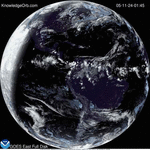
The James Webb telescope is the most powerful instrument we have ever placed in space to look at our universe. With the successful launch and deployment of the telescope we have a new capability to find not just life but signatures of technology and intelligence. The ability to monitor exo-planets for techno-signatures is something we have only dreamed of, but is now within our grasp. The bad news is it is at the very limits of JWST’s capability to do this.
In order to gather enough data to see if there are signs of alien made chemicals (pollution) in the atmosphere you need about 110 hours of observation time of that planet. When you think of all the other observations that will be made and their priority, this extremely long observation time along with the likelihood of finding what your looking for will make this a low priority. As a matter of fact, as observations go, JWST will not get to these types of searches for some time as they have so many others in line. This is sad but totally understandable.
When you consider the observation opportunities are also only when that planet passes in front of it’s sun the length of time goes up even more. What is really needed is a new observatory that is more specifically focused on this search. That is what the next generation of the JWST will do. We need further advances in creating a more stable mechanical platform so that the mirrors can be even better aligned than we can now do with James Webb.
The next generation telescope will have instruments and a design more dedicated to searching for techno-signatures. Perhaps then we could finally know if we are alone in the universe or not. Not all is lost though, the current capabilities of JWST could also uncover the answer to this ultimate question, but it will be much harder and take much more effort and time. We can only hope for the best. While we wait we have the astounding images and science it is delivering today to behold.







